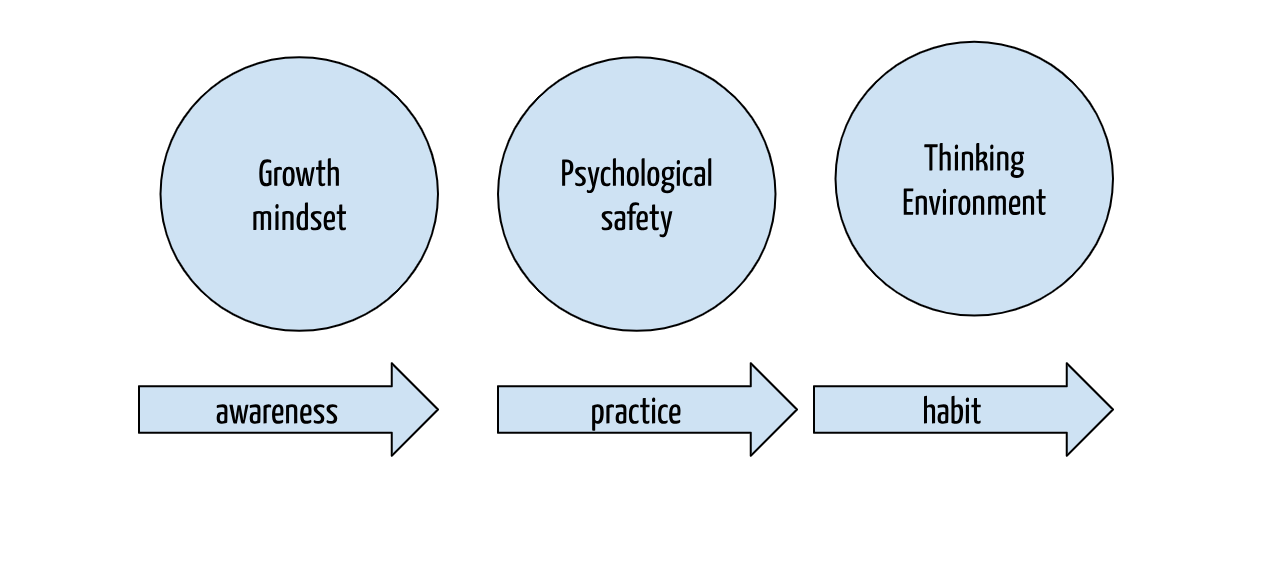Framework for Psychological Safety
Psychological safety has become a buzzword among corporates after Google published its famous finding, “The Aristotle Project" (an internal research initiative by Google, conducted around 2012-2015 to understand what makes teams effective) and also after Amy Edmondson’s book on the importance of psychological safety, “The Fearless Organisation.”
Amy Edmondson defines psychological safety as a "shared belief held by team members that the team is safe for interpersonal risk-taking." It describes an environment where individuals feel safe expressing their ideas, asking questions, admitting mistakes, and voice concerns without fear of embarrassment, rejection, or retribution.
Edmondson emphasises that psychological safety is not about being nice; it’s about fostering a culture where candour and honesty are valued, and people are encouraged to engage fully without fear of negative consequences to their self-image, status, or career.
The article focuses on a framework for building a culture of psychological safety that is underpinned by developing or encouraging a Growth mindset and practising a Thinking Environment.
As defined by Carol S. Dweck, a growth mindset is the belief that abilities and intelligence can be developed through dedication, effort, and learning. In contrast to a fixed mindset—where people see their talents and intelligence as static and unchangeable—a growth mindset embraces challenges, persists in the face of setbacks, sees effort as the path to mastery learns from criticism, and finds inspiration in the success of others.
The approach to building a culture of psychological safety can be done using Edgar Schein’s Three Levels of Organizational Culture.
Artifacts: Visible aspects of culture, such as dress code, office layout, and how people behave.
Espoused Values: The values and rules the company says it follows, including its mission and strategies.
Basic Assumptions: Deeply ingrained behaviours, often unconscious, that form the foundation of the culture.
The first stage focuses on creating awareness about the importance of Psychological Safety; the first step is to expose the teams and leaders to a Growth Mindset and Fixed mindset and provide the required training and coaching to develop and nurture the Growth Mindset. The Growth Mindset enables people to recognise that it is okay to make mistakes, and they focus on the learnings rather than focusing on the person who made the mistake. When mistakes are made, they will enhance the process and bridge any skill gaps through training and mentoring.
A culture of Growth Mindset enables people to nurture a space of psychological safety. People start taking interpersonal risks and develop and value candour and honesty.
The last stage of our framework for sustaining the culture of psychological safety and safety culture is to establish a Thinking Environment.

Nancy Kline’s Thinking Environment is a communication and leadership model designed to create the best conditions for independent thinking, collaboration, and decision-making. It emphasises creating an environment where individuals feel valued, listened to, and able to think clearly and creatively. The Thinking Environment is built on the premise that the quality of everything we do depends on the quality of the thinking we do first, and the quality of our thinking depends on how those around us treat us.
Ten Components of a Thinking Environment:
1. Attention: Listening with full focus, without interrupting.
2. Equality: Ensuring everyone’s voice is equally valued.
3. Ease: Creating a relaxed, pressure-free environment.
4. Appreciation: Offering genuine, specific praise.
5. Encouragement: Supporting others to think boldly, without competition.
6. Feelings: Allowing expression of emotions to clear the way for better thinking.
7. Information: Providing accurate, complete information.
8. Diversity: Welcoming diverse perspectives to enrich thinking.
9. Incisive Questions: Asking questions that challenge limiting assumptions.
10. Place: Ensuring the physical environment is comfortable and respectful.
These components foster independent, creative, and productive thinking.
This framework is still under development and we welcome your comments and suggestions.
Write to us at support@explorewhatnext.com
References:
Dweck, Carol. n.d. Mindset: The New Psychology of Success.Edmondson,
Amy. n.d. The Fearless Organization: Creating Psychological Safety in the Workplace for Learning, Innovation, and Growth.
Hallam, Karen T., Natasha Popovic, and Leila Karimi. 2023. ‘Identifying the Key Elements of Psychologically Safe Workplaces in Healthcare Settings’. Brain Sciences 13 (10): 1450. https://doi.org/10.3390/brainsci13101450.
Kline, Nancy. n.d. Time to Think: Listening to Ignite the Human Mind.
